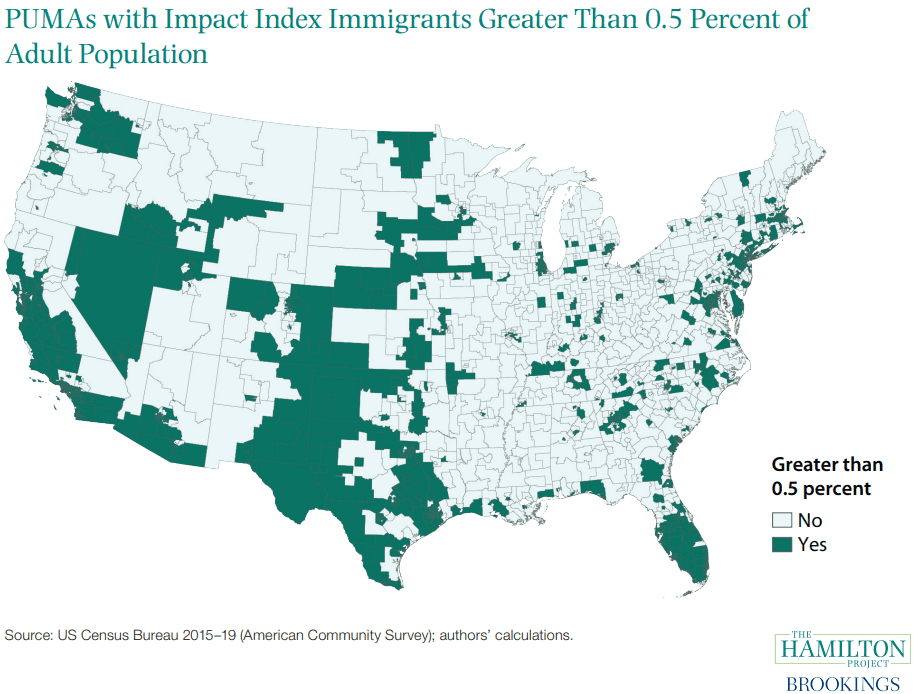The United States as a whole economically benefits from immigration, and the federal government enjoys positive fiscal impacts from immigration. But the fiscal cost of immigration is disproportionately paid for by state and local governments, particularly in those areas receiving less-educated immigrants who are new to the country. In a Hamilton Project proposal, authors Wendy Edelberg of The Hamilton Project and the Brookings Institution and Tara Watson of the Brookings Institution and Williams College offer mechanisms to redirect some of the federal gains from immigration toward those communities that bear more of its near-term costs. Specifically, Edelberg and Watson’s piece:
- Proposes a method to ensure transfers go to communities that face higher fiscal costs as the result of immigration policy.
- Relates the size of the transfers to the best available evidence on the effects on revenues and spending from immigration flows.
- Minimizes bureaucratic costs by piggybacking on existing flows between the federal government and subnational governments via Title VII Impact Aid in schools and Federally Qualified Healthcare Centers (FQHC), which will also make these immigration-related transfers visible and transparent.
Issue Overview
The economic benefits of immigration are well documented. Immigrants boost economic activity, promote innovation, and improve the productivity of native-born workers. Increases in immigration raise both tax revenues and fiscal costs. The mix of revenue types and benefits provided across the federal, state, and local levels mean that tax revenues increase the most at the federal level and costs increase the most at the subnational level. The result is a net fiscal benefit to expanded immigration at the federal level and a net fiscal cost at the state and local levels for the average immigrant.
The Challenge
Immigrants have a direct positive fiscal impact to the extent that they pay taxes and an indirect one if the increase in economic activity they create generates government revenue. The federal government provides a relatively small share of the public services that immigrants receive while accruing much of the revenue. The fiscal costs to immigration are disproportionately paid for by state and local governments, largely owing to the top two state and local expenditure categories: education and health care. Children of immigrants have access to public schools regardless of their own or their parents’ immigration statuses, and schools are mainly financed at the state and local levels. In addition, health-care benefits for immigrants are partially financed by states or localities.
The Path Forward
To ensure that the local communities affected by federal immigration policy receive more of immigration’s fiscal benefits, the authors propose to redistribute some of the fiscal gains of immigration to defray the immediate net fiscal costs that arise from welcoming newly arrived, less-educated immigrants. This proposal creates a method for determining the communities that qualify for funds, the Immigration Impact Index, and justifies an evidence-based dollar value per immigrant ($2,500) to be remitted to Immigration Impact Index communities by the federal government. These funds would visibly and transparently flow through education- and health-based federal funding channels: namely Impact Aid (education) and Federally Qualified Health Centers (health).





